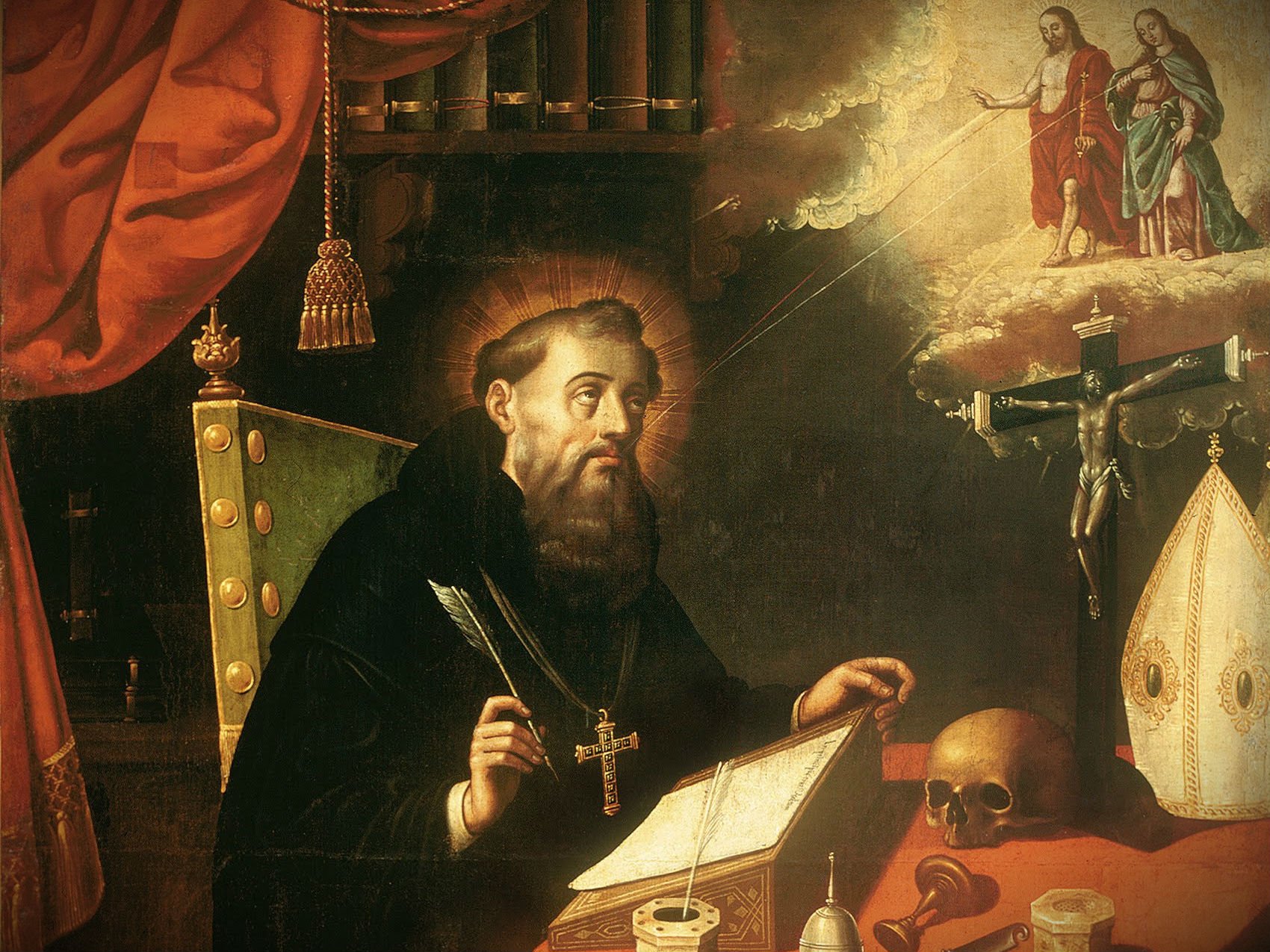Regina Caeli – Queen of Heaven, Rejoice!
The Regina Caeli, Latin for “Queen of Heaven,” is a hymn and prayer ...

There are two ways of life that God has commended to the Church. One is through faith, the other is through vision. One is in pilgrimage through a foreign land, the other is in our eternal home; one in labour, the other in repose; one in a journey to our homeland, the other in that land itself; one in action, the other in the fruits of contemplation.
The first life, the life of action, is personified by the Apostle Peter; the contemplative life, by John. The first life is passed here on earth until the end of time, when it reaches its completion; the second is not fulfilled until the end of the world, but in the world to come it lasts for ever. For this reason Peter is told “Follow me”, but Jesus adds, “If I want John to stay behind till I come, what does it matter to you? You are to follow me”.
You are to follow me by imitating me in the enduring suffering; he is to remain till I come to restore the blessings that last for ever. To put it more clearly: let action, which is complete in itself, follow me and follow the example of my passion; but let contemplation, which has only begun, remain until I come, wait until the moment of its completion.
It is the fulness of patience to follow Christ loyally even to death; the fulness of knowledge lies in wait until Christ comes again, when it will be revealed and made manifest. The ills of this world are endured in the land of the dying; the good gifts of God will be revealed in the land of the living.
We should not understand “I want him to stay behind until I come” as meaning to remain permanently but rather to wait: what is signified by John will not be fulfilled now, but it will be fulfilled, when Christ comes. On the other hand, what is signified by Peter, to whom Jesus says “follow me”, must be realised now or it will never be fulfilled.
But we should not separate these great apostles. They were both part of the present life symbolized by Peter and they were both part of the future life symbolized by John. Considered as symbols, Peter followed Christ and John remained; but in their living faith both endured the evils of the present life and both looked forward to the future blessings of the coming life of joy.
It is not they alone that do this but the whole of the holy Church, the bride of Christ, who needs to be rescued from the trials of the present and to be brought to safety in the joys of the future. Individually, Peter and John represent these two lives, the present and the future; but both journeyed in faith through this temporal life and both will enjoy the second life by vision, eternally.
All the faithful form an integral part of the body of Christ, and therefore, so that they may be steered through the perilous seas of this present life, Peter, first among the Apostles, has received the keys of the kingdom of heaven, to bind and loose from sin. And also for the sake of the faithful, so that they may keep the still and secret heart of his mode of life, John the evangelist rested on Christ’s breast.
It is not Peter alone who binds and looses sins, but the whole Church. It is not John alone who has drunk at the fountain of the Lord’s breast and pours forth what he had drunk in his teaching of the Word being God in the beginning, God with God, of the Trinity and Unity of God — of all those things which we shall see face to face in his kingdom but now, before the Lord comes, we see only in images and reflections — not John alone, for the Lord himself spreads John’s gospel throughout the world, giving everyone to drink as much as he is capable of absorbing.
St. Augustine contrasts the active and contemplative life through the examples of the apostles St. Peter and Saint John. An Eastertide reading from his Tractate on John’s Gospel (Tract. 124, 5, 7: CCL 36, 685-687) that compares this present life of faith, beset with evils, where we know God only throuh images, symbols, and reflections, to the future life of vision full of blessings, symbolized by Saint Peter and Saint John. This reading is used in the Roman Catholic Office of Readings for Saturday of the 6th week of Easter with I John 3:11-17 as the accompanying biblical reading.
No Comments